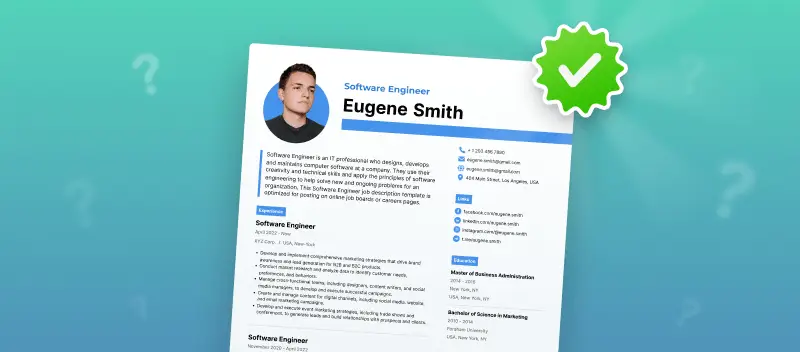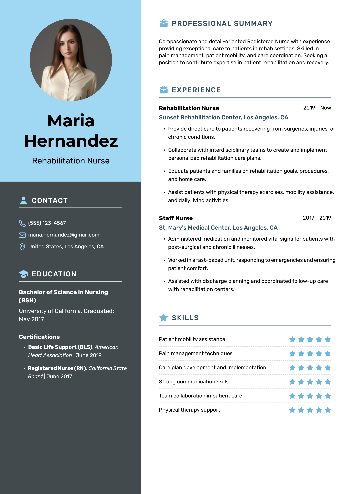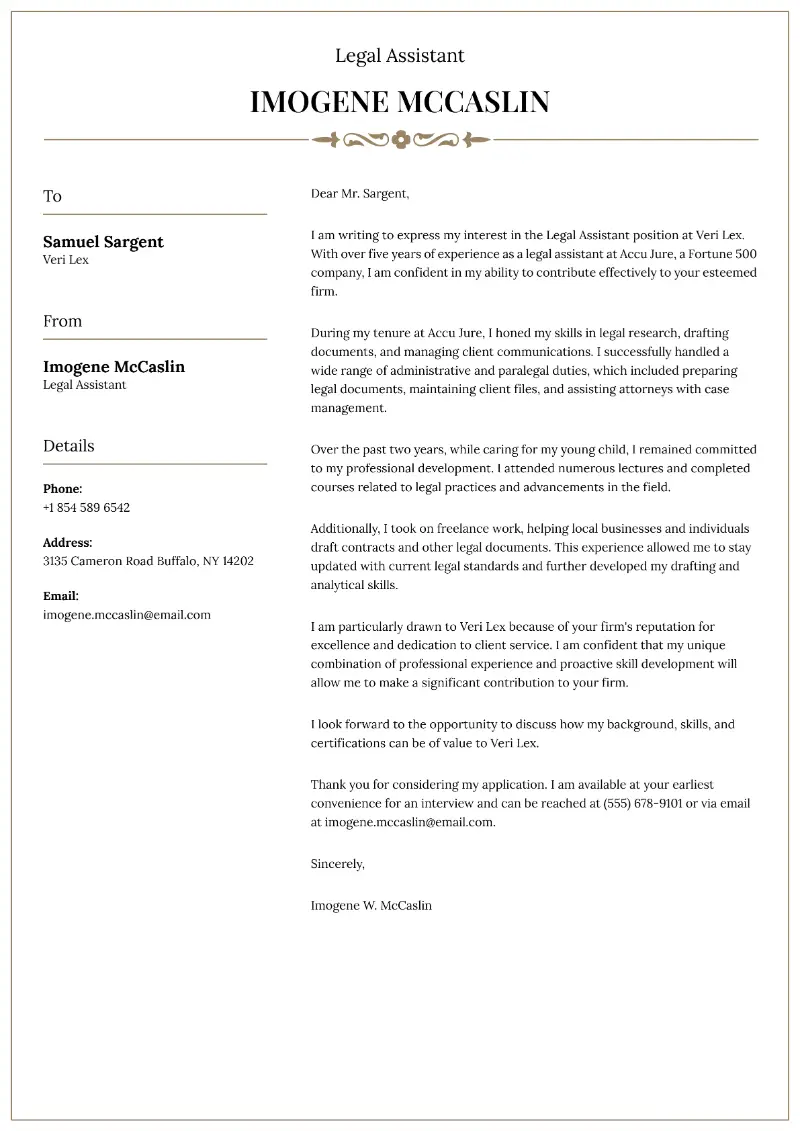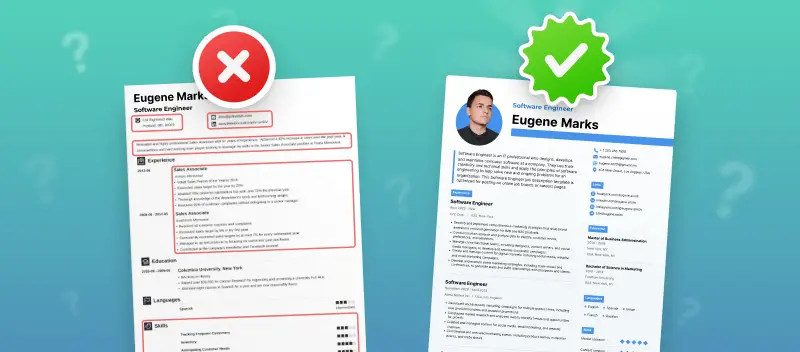How to write a perfect resume? Crafting an outstanding document can feel challenging when aiming to stand out. It is the first impression you make on a potential employer, and it speaks to your professional skills and experience.
An application that is not written properly can make you appear unreliable and unprofessional. But with the right strategy and guidance, you can create a unique paper that reflects your expertise, competencies, and accomplishments.
Here's how you can create a resume that makes a great initial effect.
How to Write a Perfect Resume
The challenge of life, I have found, is to build a resume that doesn't simply tell a story about what you want to be, but it's a story about who you want to be.
When creating a resume, it is important to decide which type of format works better. There are three primary formats: chronological, functional, and combination.
| Feature | Chronological Resume | Functional Resume | Combination Resume |
|---|---|---|---|
| Order of Presentation | Recent to Past | Skills-based | Combination of Chronological and Functional |
| Focus | Work history and career progression | Skills, abilities, and achievements | Balanced focus on skills and work history |
| Ideal for | Stable career paths, consistent experience | Career changers, employment gaps | Varied career paths, emphasizing skills |
| Highlight | Career progression and growth | Skills and achievements | Relevant skills and work experience |
| Disadvantages | Emphasizes employment gaps | Lack of clear career progression | Can be longer and potentially complex |
| Preferred by | Traditional employers | Job seekers with diverse experiences | Those wanting to showcase both skills and experience |
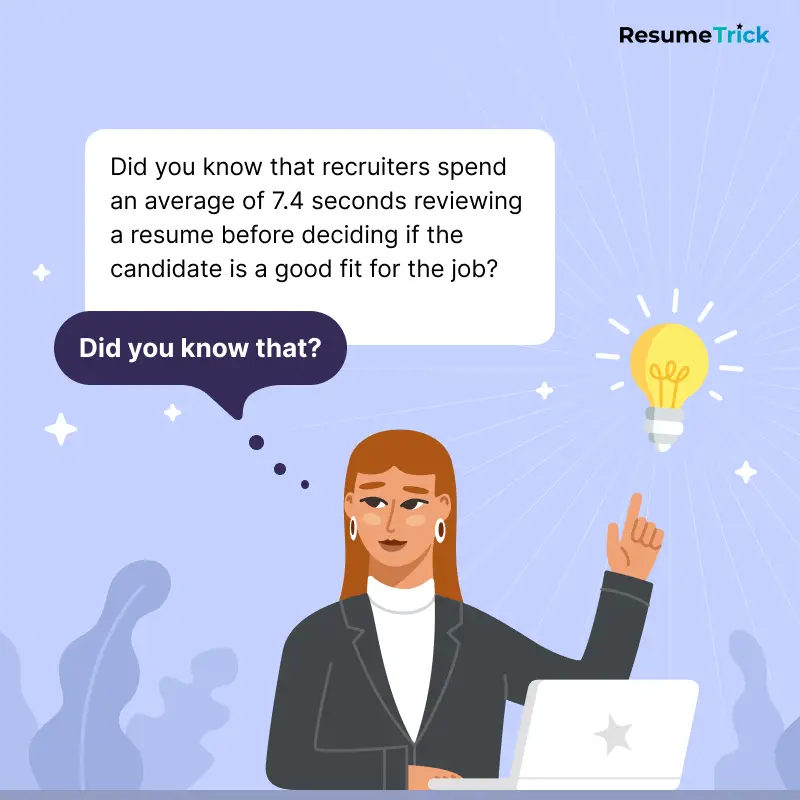
1. How to Write a Chronological Resume
Chronological resumes are an outstanding means to illustrate your prior job experience. It's one of the most commonly used types because it's easy to read and understand.
- List your current or most recent job first. Include the title, employer name, and dates of work. Fill in your past jobs in reverse chronological order.
- Include volunteer work, internships, and other relevant experiences in this section. Underline the skills you've gained from these activities.
- Put your highest degree first. Include the school name, degree type, major, graduation year, and any other relevant details like GPA.
2. How to Write a Functional Resume for a Job (Skills-Based)
A functional resume focuses on your skills and experience, rather than your chronological work history. This format of resume is a great choice if you have gaps in your work history or if you are changing careers.
- Begin writing a resume with a profile or summary that showcases your top abilities and qualifications. This may also cover significant career achievements.
- Include a skills section that lists all the abilities you have relevant to the position. Keep the section concise and focus on transferable skills.
- Combine jobs and experiences that show how you've applied the same skills in multiple roles.
- Finish off with education, certificates, awards, and volunteer experience. Demonstrate to employers the breadth of experience you possess
With a skills-based resume, it's crucial to focus on what you can do for the employer, rather than where you worked and when. Put yourself in the employer's shoes and think about what they need from a successful candidate.
3. Making a Hybrid Resume (Combination)
A hybrid resume is a combination of a chronological and functional types. Writing such a resume great for those who want to emphasize their skills and experience more than their position names.
- The overview of competencies section provides a review of your background, qualifications for job, and special abilities. This needs to be short and to the point – no more than 5-6 lines.
- Include your most recent occupational category, company name, location, dates of employment, and a synopsis of your duties and responsibilities.
Overall, the combination resume is ideal to show what you've achieved without getting too caught up in job titles and dates. Keep it concise and organized, while making sure to highlight your unique skill set.
Now, let's take a closer look at the resume sections.
Contact Information
Ensure that your contact details are included in your resume. This should include your full name, address, email, and phone number. It would be wise to attach a headshot photo on resume.
By 1940, resumes began incorporating unrelated details like age, weight, height, marital status, and religion.
- Your name is the most prominent part . It has to be featured at the top. Don't write on a resume any nicknames or abbreviations.
- Email should be professional and appropriate for the workplace. For instance, avoid using nicknames or unprofessional email addresses such as partygirl11@example.com. It's best to set up a dedicated email for job resumes.
- Put your full physical address on your resume. Remember to write the city and state you live in. If you're looking for employment in another state, think about including your address even if you are currently living outside of the area.
- Supply a telephone number that is accessible to employers. It's advisable to have a dedicated line just for applications. Make sure this number is listed on your resume and that it is a professional voicemail message when employers call it.
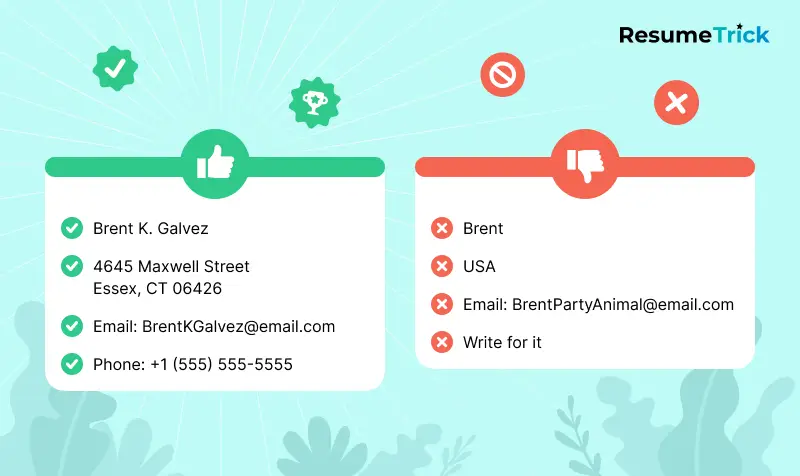
Optional Contact Information for Resume
It is advisable to incorporate optional info such as social media accounts, websites, and blogs. This will offer employers a better comprehension of your identity and capabilities.
- Social media links are great for demonstrating your personality and skills. Include links to your LinkedIn, and Facebook profiles if applicable.
- You can also attach a link to your personal website or blog. This will give a deeper insight into your abilities, interests, and passions.
Resume Headline
How to write a resume headline? Designing it is an integral part of the job search process. It should grab the attention of recruiters and hiring managers, and quickly tell them what you bring to the table.
Resume Summary
A resume summary is a brief section located at the head of your resume that highlights your key qualifications and experiences. It's typically 3-5 sentences long and summarizes your expertise, skills, and accomplishments.
- Focus on the most recent and relevant experience. Make sure to append any profession, industry, or field you've worked in, as well as any related skills or attainments. Don't forget to mention any awards or recognition you've received for your work.
- You should use a summary when seeking employment that calls for more than rudimentary credentials. Hiring managers want to see that you have the right level for the job. A resume summary can distinguish you from the competition by highlighting to employers why you're the optimal choice.
- When making a resume summary, make sure it's clear and concise. Avoid using sphere jargon or overly technical language; instead, focus on your value. You should also use active verbs to emphasize your accomplishments and accent your successes.
A strong resume summary is an important part of your job search strategy. Consider using one when applying for jobs that require more than just basic qualifications and confirm it reflects your unique skills and expertise.
Vigilant and dependable security professional with 5+ years of experience in facility patrol, access control, and emergency response. Holds a valid Guard Card and CPR certification. Strong observational skills, calm under pressure, and dedicated to maintaining a safe and secure environment.
Resume Objective
A resume objective is a brief remark featured prominently on your resume for a job that outlines your career intentions. It's usually one or two sentences and should be customized for the role.
- When writing a resume objective, focus on the skills and experience you have that will benefit the employer. Include characteristics about your desired position and how you intend to use your abilities to contribute to the company.
- Include specific abilities that are suited for the job. Also, contemplate incorporating key certifications that differentiate your application.
- It's important to note that a resume objective isn't always necessary. For example, if your experience is vast and obvious from the rest of the resume, you may not need to incorporate an objective.
Highly disciplined Army veteran transitioning into civilian workforce, aiming to leverage leadership, problem-solving, and logistics expertise in an operations or security management role within a mission-driven organization.
Create your professional Resume in 10 minutes for FREE
Build My Resume
Work Experience
Your work background is one of the most important. This resume section should typically be placed near the top of your paper, especially if you have a solid and relevant work history. Main points to remember:
- Start by writing a brief resume summary of your experience and list each job you've held in reverse chronological order.
- Ensure to include points that demonstrate the scope and depth of your background.
- Show how you made a difference in every workplace - highlight specific accomplishments examples that showcase your skills and value as an employee.
- Focus on quality over quantity - an impressive single job may be worth more than several mediocre ones. If you have limited work experience, emphasize related coursework, volunteer opportunities, and extracurricular activities that illustrate your potential.
- Keep it concise - limit any position entry to two or three sentences at most. A succinct description of your work history will help employers quickly identify the most important information about you.
How to Write a Resume Experience
By placing this section near the top, you immediately capture the recruiter's attention with your professional background. This is particularly effective if your work history is a strong selling point for the position you're applying to.
Here's a guide on what should be written:
- Position title. Clearly state your job title for each position you've held.
- Company name and location. Provide the name of the company or organization where you worked and its location (city and state).
- Dates of employment. Include the start and end dates for each position. If you're currently employed, write "Present" or the current month and year.
- Responsibilities. Outline your key responsibilities and duties in bullet-point format. Focus on tasks that are relevant to the job you're applying for.
- Achievements. Highlight specific accomplishments related to each position. Use quantifiable metrics and data when possible to demonstrate the impact of your work.
- Career progression. Demonstrate how your roles have shown growth and progression in your career. Highlight promotions, increased responsibilities, or expanded duties.
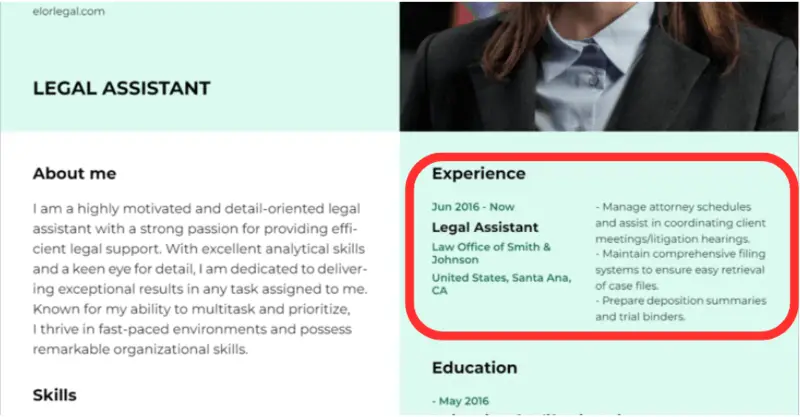
But how much is the bottom line? It depends on your employment level:
| Grade | Amount |
|---|---|
| Recent graduate, students | If you have little or no paid experience, list any volunteer work, internships, or part-time jobs. |
| Mid-level professionals | Insert all relevant paid and unpaid work experience from the past 10 years. Focus on accomplishments rather than duties and responsibilities. |
| Senior executives | Highlight your most recent positions but also include important roles from earlier in your career. Showcase any awards received and the impact you had on the company. |
No matter your occupation stage, confirm to include only relevant experience. Employers will be looking for skills applicable to the position.
Resume Education
When writing a resume, you should include information about your education. Therefore, add the necessary qualifications for the job you are targeting.
How to Write a Resume Education Block?
- Start with the name of your degree or certification, followed by the school or institution you attended. Include details such as the location, year of completion, and GPA if it's impressive.
- If you have any additional certifications or accreditations related to your field, list them as well. Even if there is no direct tie to the desired job, they can illustrate your dedication to schooling and career progress.
- You can enumerate any exclusive awards or honors you acquired during your schooling. This could include scholarships, academic societies, or other recognitions. It's an opportunity to demonstrate your drive and ambition.
- Finally, if you're still in school or plan to attend soon, add this information too. It can be a brilliant method of proving your initiative and differentiating yourself when it comes to development and seeking new opportunities.
Skills Section
What skills to put on a resume? Include both hard and soft skills.
Hard skills refer to technical abilities or knowledge, like software development, coding, or accounting. Soft skills include communication, problem-solving, and organizational abilities.
- Review job postings for positions that interest you. Many postings will list specific skills they're looking for. This can help you focus on the most sought-after qualifications in your industry.
- Not all of the skills listed in a job posting must be incorporated into your resume. Focus on the ones most relevant to your experience and interests. There's no need for a detailed list of all the skills you have.
- When listing skills on your resume, make sure they're easy to find and clearly written. Use action verbs to describe each skill and include a few examples from the past. This will assist potential employers in quickly recognizing and grasping your qualifications.
- Update your resume regularly as you gain knowledge and experience throughout your work. Keep track of what new skills you acquire so that you can incorporate them as needed.
Hard skills for resume examples:
- Data Analysis
- Programming (Python, Java, C++)
- Project Management
- Financial Modeling
- Graphic Design (Adobe Creative Suite)
- SEO Optimization
- Technical Writing
- Database Management (SQL, MongoDB)
- CAD Design
- Network Security
- Machine Learning
- Product Management
- Microsoft Excel (Advanced)
- Digital Marketing
- Cloud Computing (AWS, Azure)
Soft skills examples:
- Communication
- Adaptability
- Problem-Solving
- Time Management
- Teamwork
- Creativity
- Conflict Resolution
- Emotional Intelligence
- Leadership
- Attention to Detail
- Resilience
- Decision-Making
- Critical Thinking
- Empathy
- Collaboration
Keep these tips in mind and you'll be able to put your qualifications on full display and make sure potential employers are aware of all your valuable skills!
Top Skills to Add When Writing a Resume
A resume is a tool to showcase your skills, experience, and accomplishments to employers.
Additional Resume Sections
Starting in the 1950s, resumes began incorporating extracurricular interests, such as sports and club memberships.
Additional resume sections can be valuable in showcasing unique aspects of your qualifications and making your resume stand out. Here are some common sections you might consider:
Hobbies and Interests for Resume
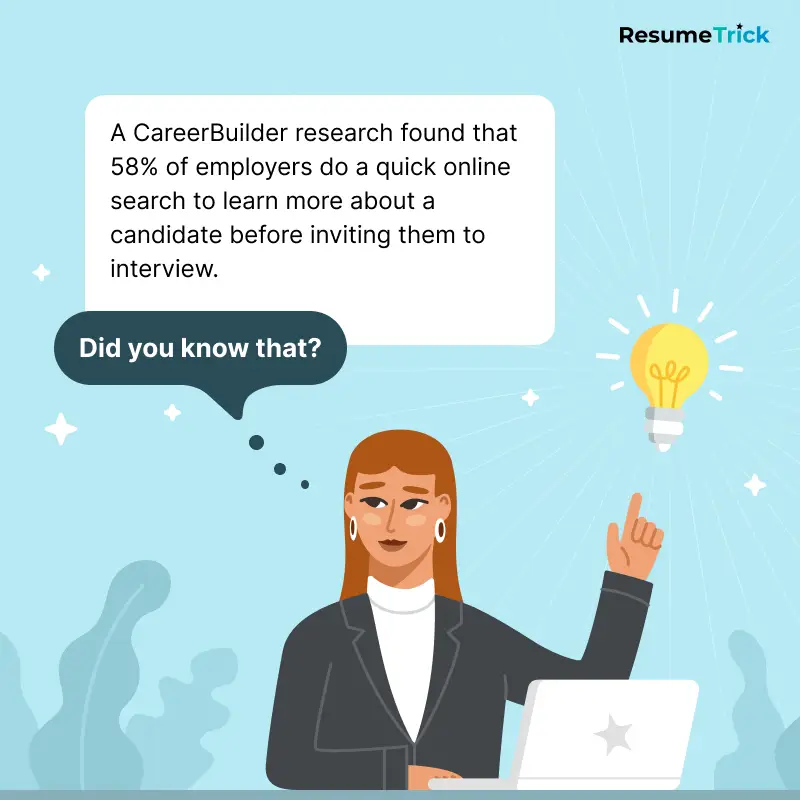
Add information about your interests and hobbies. Not only does this put you ahead of other applicants, but it also helps employers better understand what drives and motivates you.
- Ensure that you are only including those extracurricular activities that are relevant to the field. If you are seeking a career in marketing, list any activities such as attending networking events or reading industry-specific magazines.
- When setting down your hobbies, don't just say "I like charities", describe why you enjoy it. Explain how volunteering at a soup kitchen is a great opportunity to use your communication skills and interact with people across the board.
- Highlighting pastimes and pursuits on your resume displays to recruiters that you possess a multifaceted personality. This can be very attractive to an employer who is looking for someone who will fit in with the company culture.
- Finally, state any distinctions or commendations you may have obtained for hobbies or interests related to the occupation. This could be anything from winning a contest or being recognized for volunteering work.
Detailing your pastimes and interests helps employers understand who you are and why you'd be perfect for the job. Select only actions that pertain and are significant, so that they make the strongest impact possible!
Volunteer Work on Resume
It illustrates to possible employers that you are endowed with skills, commitment, and expertise beyond the typical workplace.
- Start by thinking about what you've done as a volunteer. Did you lead a project, work with a particular organization, or help out with an event? Put these particulars on the application form.
- If you don't have much experience as a donator, consider itemizing any unpaid internships or projects you completed. This ranges from working on a website or helping a friend with their business.
- Remember to include the date and duration of the volunteer work. This will help potential employers understand how long you were involved in the project and how much you did.
- Describe the skills you learned or used during the volunteer experience. For example, if you helped organize an event, list the organizational skills and teamwork abilities that it required.
- Finally, do not overlook the influence of your work. Explain how your volunteering made a difference and what you accomplished.
Listing volunteering experience shows potential employers that you're committed to your community and wish to do more to help. Highlight your hard work and skills to make the most out of your voluntary experience.
Certifications on Resume
Bolstering your resume with credentials is a great method to upgrade your qualifications. Certificates can demonstrate that you have proficiency in a particular field or profession.
- If you have accreditations - write them on a resume. Make sure to specify the name of the credential, the institution that issued it, and the year it was awarded.
- You can also enter any additional information regarding the certification such as test scores and coursework. Include links to the issuing organization if they are available online. This will allow potential employers to easily verify the authenticity.
- Confirm that you highlight testimonials relevant to the position you have applied for. If you have multiple certificates related to different positions, you can attach them all and create a separate "Certifications" section on your resume.
Keep your licenses up-to-date. Maintaining valid credentials shows employers that you are knowledgeable in your field and willing to take initiative.
Awards and Honors for Resume
Awards can include any recognition from an employer, such as employee of the month awards or performance-based awards. Honors can include scholarships, academic awards, or belonging to specialized associations.
Provide enough detail to allow the reader to understand what the award was for and when it was received when enumerating awards and honors.
- Employee of the Month Award (May 2020) - Recognized for outstanding customer service in a high-volume call center;
- Dean's List (Spring 2019) - Awarded for achieving a 3.5 GPA in all courses taken during the semester;
- Membership in Professional Organization (Since 2018) - Member of the American Society of Civil Engineers.
In addition to indexing accolades and rewards on your resume, think about providing more information about them in your cover letter or job interview. This enables you to discuss how they apply to the job and why they make you a perfect fit for the role.
Publications on Resume
If you have any writings or scholarly papers, include them in your resume. This will impress future employers with your extensive knowledge in your sphere and your willingness to take the time to research and publish your findings.
Include the title of the publication, where it was published, the date of it, and any co-authors. If it is an online publication, be sure to give a link to make it simple for employers to locate and find it.
Example of publication on resume:
"The Effects of Climate Change on Human Health" – Journal of Environmental Science, 2017 (co-authored with Dr. John Smith). [Link to the article]
Remember that including publications gives employers a better understanding of your qualifications and abilities. Therefore, ensure that you only list those which exhibit your expertise in the field and are connected to the position you seek.
Languages
Start by inclining your language abilities in order from strongest to weakest. Add any dialects, such as British or American English, that might be relevant. Concrete your level of proficiency (native, fluent, proficient, intermediate, basic).
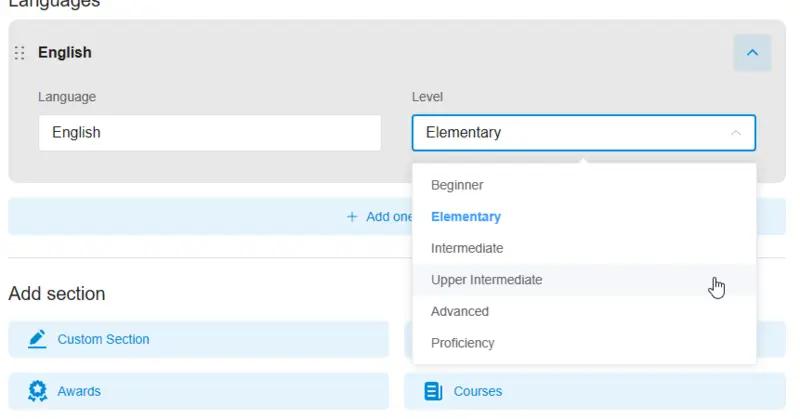
If you have no work-related experience with a language, specify how you've employed it in different settings. If you studied Spanish in high school, indicate this and note if you are able to read and write in the language.
Also, assess any certifications or tests taken to prove your proficiency. Are you a certified translator? Did you take the TOEFL? Take care to include these details on your resume as well.
Finally, evaluate how language abilities may help you obtain the job position. Does the company do business overseas? Do they need someone who is bilingual? Demonstrate how having these abilities will be beneficial to them.
Incorporating languages you know can show employers that you are a well-rounded candidate with diverse skills and talents. Take time to record all linguistic skills and highlight any special qualifications that set you apart from others.
Projects on resume
Personal projects are a great way to demonstrate your skills and showcase yourself in a resume. Fear not to mention activities that you did outside of school or work - they are just as important!
How to create a resume projects section:
- Clearly describe the project. What was its purpose? What did you do?
- Showcase any relevant skills you developed or used during the project.
- Explain what you learned from the experience.
- Highlight any collaboration or teamwork involved in the project.
- Talk about any challenges you faced and how you overcame them.
Including individual projects on a resume for a job can help employers gain insight into your successes beyond school or employment. Here is your chance to demonstrate: creativity, problem-solving skills, and dedication.
So don't be afraid to include them on your resume and advertise the skills and achievements they provide!

References on Resume
This is a resume section where you can list people who will write you a letter of recommendation and validate the skills and experience listed on your resume writing.
- Start this section with "References" written in bold. It should be at the bottom of the resume, after the Education and Work Experience sections.
- Point out three to five contacts, depending on the job you are applying for. Include their names, titles, organization names, phone numbers, and email addresses. If possible, include LinkedIn profiles as well.
- If you've worked in a company before, make sure to list your former boss as one of the references. If you haven't worked before, you could list professors or any other individuals who can speak positively about your abilities.
- Keep in mind that employers might contact your references, so make sure they know that you are searching for a job. Ask their permission before listing them.
Create your professional Resume in 10 minutes for FREE
Build My Resume
Tailoring Your Resume
Every job posting is unique, with its own set of requirements and preferred qualifications. Customizing your resume allows you to emphasize the skills and experiences most relevant to the specific position, increasing your chances of catching the employer's attention.
This process involves several steps:
- Start by thoroughly reading the job description and noting the key requirements, skills, and qualifications the employer is looking for.
- Review your own work history, education, skills, and accomplishments. Identify those that are most relevant to the job you're applying for.
- Craft a resume summary or objective statement that quickly communicates why you're a strong candidate for the position.
- Use specific examples and quantify your achievements whenever possible.
- While your education history typically remains the same, you can still emphasize relevant coursework, certifications, or training programs.
By following these steps and customizing your resume to align with each job application, you can increase your chances of getting noticed by employers and ultimately landing the job you want.
How to Proofread Resume
One small typo on your resume could cost you your dream job. 61% of recruiters won't consider a resume with mistakes.
Scrutinize your resume repeatedly prior to submitting it to potential employers. Check for typos, grammatical errors, and incorrect formatting. Verify that you are not using phrases or words that are overused in resumes. Follow this resume proofreading guide:
- To ensure accuracy, read your resume aloud. This forces you to slow down and pay attention to each word. Read it again, or even better, have someone you know read it too. This can help detect mistakes you may have overlooked. Think what else to put on a resume.
- Check for formatting issues as well. Is the font consistent throughout? Are dates formatted precisely? Is the layout easy to scan? Make sure everything looks polished.
- Finally, double-check that all letters of recommendation are accurate and up-to-date. If a contact has changed jobs or moved, use the most recent info available. And don't forget to update your resume if any of your own information changes.
Email Resume Correctly
Once you have proofread your resume, make sure you attach it correctly to an email. Use a professional subject line with your full name and position.
- Include a brief introduction in the email, introducing yourself and conveying your enthusiasm for the position. Be concise and professional.
- When sending your resume, use PDF format as it retains its original view and prevents accidental changes from being made when it is opened by recipients.
- Involve a signature at the end of your email that includes your contact information, such as phone number and website address if applicable.
Proofreading and accurately attaching and sending out the resume is essential to ensure that it reaches the right people optimally. Not following these steps can cost you greatly when applying for jobs.
Resume Tips on Formatting and Style
Microsoft Word was launched in 1983, introducing a new template standard for resumes.
It's vital to make your resume look professional. Start with a simple format, like Times New Roman 12-point font, and left alignment. Don't use any fancy fonts or crazy formatting.
- Choose a consistent style for headings and subheadings throughout. You may want to use boldface or italics to differentiate your titles from the body of your text.
- Be sure to add plenty of white space between paragraphs, sections, and other elements to have your resume easier to read.
- Consider using columns for certain sections, especially if you want to maximize space or create a visual hierarchy.
- Set reasonable margins (typically 1 inch) to ensure your resume looks well-balanced and is easy to print.
- While some industries or roles may allow for a bit of color, it's generally safer to use black and white.
- Save your resume as a PDF to maintain formatting consistency across different devices.
- Also, be aware of the length of your resume. Aim for no more than two pages, but don't sacrifice quality content for brevity.
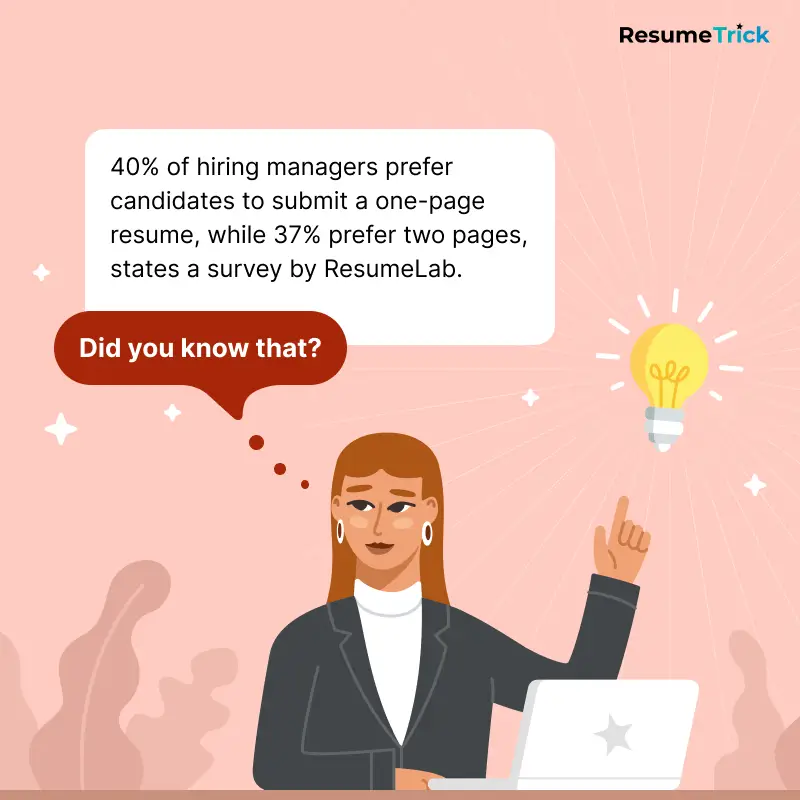
Cover Letter
Your resume serves as an ideal platform to demonstrate your qualifications and work experience. But, to make a powerful impact among other contenders, you need to make sure that you pair it with an equally impressive cover letter.
Writing a good cover letter is an art. It needs to be convincing, and it should be crafted for the role you seek.
How to start a resume cover letter
- Research the company: Get familiar with the company's mission and values. This will customize your letter to fit their needs.
- Highlight your qualifications: Use your cover letter as an opportunity to highlight your experience that is relevant to the job.
- Make it personal: Avoid using generic phrases like "To whom it may concern". Address it to the hiring manager directly, and use their name if possible.
- Keep it brief: Try to keep it under one page. Be concise in conveying why you are the best candidate for the position.
- Proofread: Look through the cover letter before submitting it! Check for any grammar or spelling mistakes, and ensure the accuracy of all information.
Cover letter examples
A well-written and tailored cover letter can be a great way to make a good first impression on potential employers. Complementing it with a corresponding resume can help you land the job of your dreams!
Create your professional Cover letter in 10 minutes for FREE
Build My Cover Letter
Applicant Tracking System (ATS)
An Applicant Tracking System (ATS) is a software application used by employers and recruiters to streamline the hiring process.
It's important to understand how ATS software works. ATS systems are used by recruiters to scan resumes and rank them based on the keywords and phrases they contain.
ATS hints:
- Include key phrases and terms that match those used in the job posting or job description.
- Long sentences with technical jargon won't be read by ATS, so keep it plain.
- Spell out acronyms the first time you use them, followed by the acronym in parentheses.
- Employ dynamic terms to depict your experience and attainments.
- Use standard section headings (e.g., "Work Experience," "Education").
- Instead of using symbols (%, $, etc.), spell out numbers.
- Information in headers and footers may not be parsed correctly by ATS.
- Avoid graphics, images, and tables that may not be parsed accurately.
By following these tips, you increase the likelihood that your resume will be effectively parsed by the ATS, allowing you to make it through the initial screening process and into the hands of hiring managers.
Resume Checklist
What should a resume look like?
Creating a compelling resume involves several key steps. Use this checklist to ensure your resume is well-crafted and effectively communicates your qualifications:
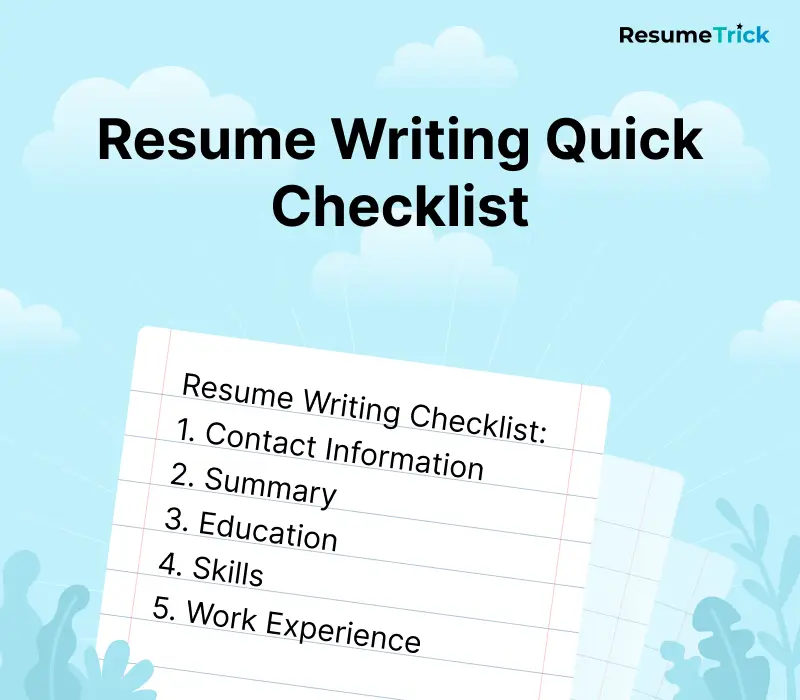
- Contact Information:
- Full name is prominently displayed.
- Professional email address is used.
- Phone number is current and reachable.
- Resume Objective or Summary (Optional):
- Objective or summary is tailored to the specific job you're applying for.
- Briefly highlights your career goals and key qualifications.
- Education:
- List your educational background in reverse chronological order.
- Include the name of the school, degree earned, major (if applicable), graduation date, and any academic honors.
- Skills:
- Highlight relevant skills, both technical and soft skills.
- Align skills with the job requirements.
- Work Experience:
- List work experiences in reverse chronological order.
- Include the name of the company, job title, and dates of employment.
- Use bullet points to describe responsibilities and achievements.
- Start each bullet point with a strong action verb.
- Quantify achievements with numbers when possible.
- Tailor descriptions to match the job you're applying for.
- Additional Sections (Optional):
- Consider adding sections like certifications, languages, awards, or interests if relevant.
- Formatting and Style:
- Maintain a consistent and professional format.
- Use a clean and readable font.
- Ensure proper spacing and margins.
- Avoid graphics, images, and tables that may not be ATS-friendly.
- Save your resume as a PDF to preserve formatting.
- Proofread:
- Thoroughly proofread for typos, grammatical errors, and consistency.
- Consider having someone else review your resume.
- File Name:
- Use a professional file name (e.g., "FirstName_LastName_Resume.pdf").
- Overall Impression:
- Ensure your resume presents a clear and compelling snapshot of your qualifications.
- Check that it aligns with the expectations of the industry and the specific job you're applying for.
Regularly update and refine your resume as your career progresses. This checklist serves as a guide to help you create a strong and effective resume for your job applications.
Resume Examples
A creative resume template can help you stand out from the rest of the job applicants and make a lasting impression on potential employers. Look through several examples of well-written resumes:
Data Analyst Resume Example
Objective:
Enthusiastic and Results-Driven Analyst with a track record of six years in navigating and deciphering extensive datasets. Eager to apply my expertise in statistical analysis and machine learning to steer transformative business outcomes at ABC Corporation.
Skills:
- Mastering the art of Data Mining;
- Crafting insights through Predictive Modeling;
- Proficient in SQL;
- Visualizing data with Tableau;
- Harnessing the power of Python and R Programming;
- Excelling in Microsoft Excel, PowerPoint, Word, and Access;
- Applying Statistical Analysis to drive decisions.
Experience:
Data Analyst at Wells Fargo, California. (2017 - Present)
- Uncover trends and models within vast datasets, steering key managerial decisions.
- Engineer databases for robust data storage and analysis using SQL and other database software.
- Create visually compelling Tableau dashboards, simplifying complex data for stakeholders.
- Apply predictive modeling techniques, accurately forecasting future trends.
- Automate manual processes with Python scripts, significantly enhancing operational efficiency.
- Develop a custom R program to generate sales forecasts based on nuanced customer demographic and market trends data.
Research Assistant at the University of California (2014-2017)
- Methodically collected, cleaned, organized, and inputted research data into comprehensive spreadsheets.
- Conducted in-depth analysis of research results using statistical tests within Microsoft Excel.
Education:
- Bachelor of Arts in Mathematics from the University of Louisville (2010 - 2014).
Waiter Resume Example
Objective:
Dedicated and customer-focused waiter with a proven track record of delivering exceptional service in high-volume restaurant settings. Seeking a waiter position to contribute strong interpersonal and organizational skills to create a positive dining experience.
Experience:
Waiter | The Bistro, Tulsa, USA | March 2018 - Present
- Provide attentive and personalized service to restaurant patrons, ensuring a positive dining experience.
- Effectively communicate daily specials, menu items, and promotions to guests, contributing to a 15% increase in upsells.
- Handle customer inquiries, concerns, and special requests promptly and professionally.
- Collaborate with kitchen staff to ensure timely and accurate order delivery.
- Maintain a clean and organized dining area, contributing to a welcoming atmosphere.
- Process customer payments accurately using point-of-sale (POS) system.
- Consistently achieve a 95% or higher customer satisfaction rating based on post-dining surveys.
Server Assistant | Café Delight, Tulsa, USA | June 2016 - February 2018
- Assisted waitstaff in setting up and clearing tables, ensuring a smooth flow of service.
- Prepared and delivered beverages and appetizers promptly to guests.
- Collaborated with kitchen and waitstaff to streamline order delivery and enhance overall service efficiency.
- Managed table reservations, providing accurate wait time estimates to customers.
- Gained proficiency in POS system operations and order entry.
Skills:
- Excellent customer service and communication skills.
- Ability to handle high-stress situations in a fast-paced environment.
- Strong attention to detail and organizational skills.
- Knowledge of food and beverage menu items.
- Familiarity with point-of-sale (POS) systems.
- Team collaboration and multitasking abilities.
Education:
- High School Diploma, Tulsa High School, 2017
Additional Certifications:
- Food Safety Certification, ABC Training Institute, 2020
Use Resume Builder
Composing a resume may take up much of your time. But there's no need to start from scratch. An excellent approach for conserving time is to utilize a free resume website.
You can find plenty of samples online that will help you get organized and showcase your work experience, skills, and education in an effective way. Plus, many of them come with built-in tips and hints that can help building a resume.
Create your professional Resume in 10 minutes for FREE
Build My Resume
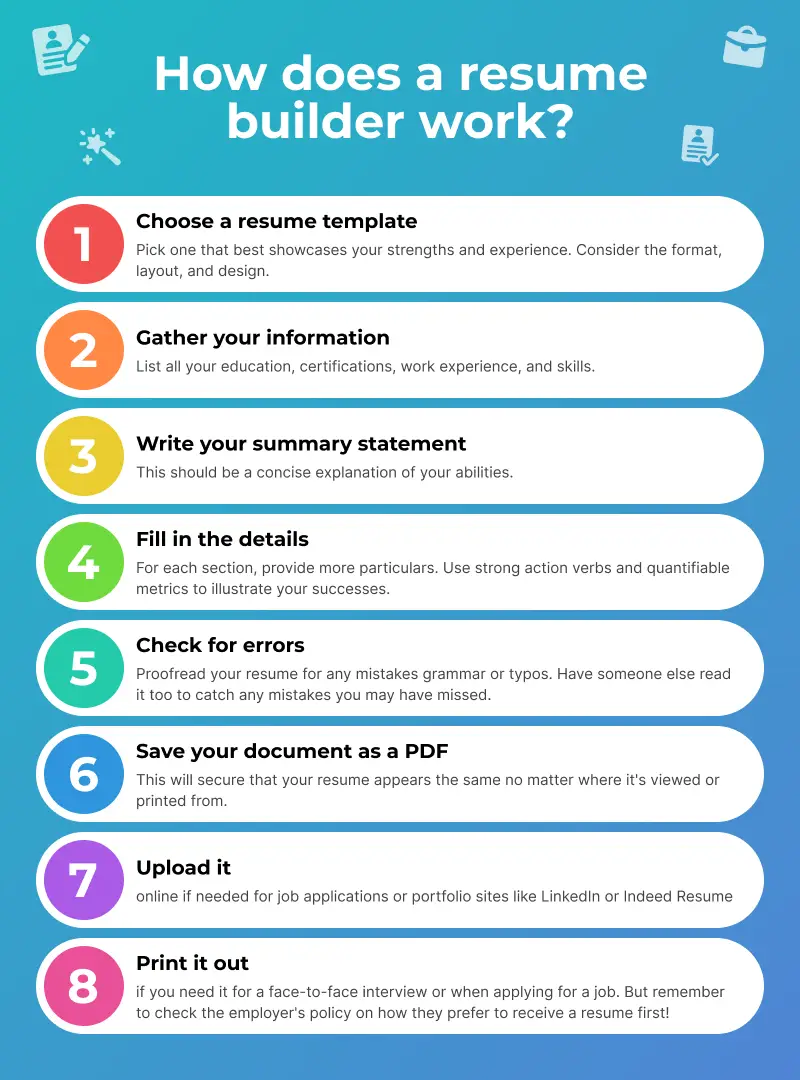
Best of all, most of these resume examples are easy to edit and download as PDF or Word documents. So you don't have to worry about formatting. Plus, they are also mobile-friendly so you can apply for jobs on the go!
So think about using a Resume Builder if you want to reduce the time required to write your resume
How to Write a Resume: Conclusion
In 1482, Leonardo Da Vinci wrote the world's first resume.
Making a good resume takes practice and patience, but with effort, you can construct something that accurately reflects who you are and what you have to offer an employer.
Remember, your resume is a dynamic document that should evolve with your career. Regularly update and tailor it to reflect your growth and achievements.
Overall, creating a strong resume is an essential part of the job searching process and one that should not be overlooked. With the right approach and attitude, you'll be ready to impress potential employers with your carefully crafted resume.
